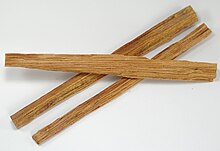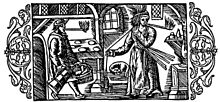Så var vi lige en dejlig tur på Agersø hvor vi på den aller sydligste spids fandt en meget gammelt dødt fyrretræ. Øksen blev fundet frem og da al det frønnede træ var blevet fjernet havde vi en ganske pæn portion fatwood af højeste kvalitet. det blev selvfølgelig slæbt med hjem hvor det kommer til at gøre gavn som optænding på bålpladsen.
Fatwood - Wikipedia
Fatwood, also known as "fat lighter," "lighter wood," "rich lighter," "pine knot," "lighter knot," "heart pine" or "lighter'd" [sic], is derived from the heartwood of pine trees. This resin-impregnated heartwood becomes hard and rot-resistant. The stump (and tap root) left in the ground after a tree has fallen or has been cut is an excellent source of fatwood. Other locations, such as the joints where limbs intersect the trunk, can also be harvested. Although most resinous pines can produce fatwood, in the southeastern United States the wood is commonly associated with longleaf pine (Pinus palustris), which historically was highly valued for its high pitch production.
Contents
[hide]History[edit]
The commercial use of fatwood from stumps stemmed from its use to make pitch and pine tar. In 1648, a company was formed in Sweden called Norrländska Tjärkompaniet (The Wood Tar Company of North Sweden), and was given exclusive export rights[for pinetar - see separate topic- not fatwood] by the King of Sweden.[1]
Composition[edit]
Coniferous tree sap is a viscous liquid, that contains terpene, a volatile compound which is a type of hydrocarbon. Over time the evaporation of the terpene changes the state of the sap; it slowly gets thicker until it hardens intoresin. New fatwood leaks the sticky sap, while in aged fatwood the sap has hardened and is no longer sticky. At every stage of the aging process, fatwood will burn readily, even when wet.
Natural process[edit]
Fatwood is scar tissue of a damaged or injured pine tree. A lightning strike will scar a tree sometimes top to bottom without necessarily killing the tree. The result scar of burnt bark will "scar" over with resin. Once hardened, the wood and bark around the area becomes rich with the flammable hardened resin. High winds breaking limbs, or violently twisting the tree, will also open "wound" in the tree bark. Again, resin will harden forming "scar" tissue rich in fatwood. Hard yellowish resin can be found around the wound area. This can then be scraped off and used as a fire starter.
Wood kindling and tinder[edit]
Because of the flammability of terpene, fatwood is prized for use as kindling in starting fires. It lights quickly even when wet, is very wind resistant, and burns hot enough to light larger pieces of wood. A small piece of fatwood can be used many times to create tinder by shaving small curls and using them to light other larger tinder. In Louisiana "fatwood" is known as "rich lighter" and cut slivers are what is referred to as "kindling" because of the abundance. The pitch-soaked wood produces an oily, sooty smoke, and it is recommended that one should not cook on a fire until all the fatwood has completely burned out. Because of this oily smoke fatwood should not be used for indoor fireplaces. A fatwood pine knot burns hot enough that even one of a smaller size can cause damage to a wood stove and even cause house fires.[citation needed] The smoke produced by "fatwood" is considered to be an excellent bug (especially mosquito) repellent. (Although this is unproven)
Distribution[edit]
There are between 105 and 125 species classified as resinous pine trees around the world. Species usable for fatwood are distributed across a range including Eurasia, where they range from the Canary Islands, Iberian Peninsula and Scotland east to the Russian Far East. From the Philippines, Norway, Finland and Sweden (Scots Pine), and eastern Siberia (Siberian Dwarf Pine), and south to northernmost Africa. From the Himalaya and Southeast Asia, with one species (Sumatran Pine) just crossing the Equator in Sumatra,. In North America, they range from 66°N in Canada (Jack Pine), to Central America to 12°N in Nicaragua (Caribbean Pine). The highest diversity in the genus occurs in Mexico and California. In the sub-tropics of the Southern Hemisphere, including Chile, Brazil, South Africa, Australia, Argentina and New Zealand, where the trees are not indigenous but were introduced. Anywhere there is a pine tree or pine stump, there can be fatwood that can be found on top of the ground, but is more concentrated and preserved in stumps.

















